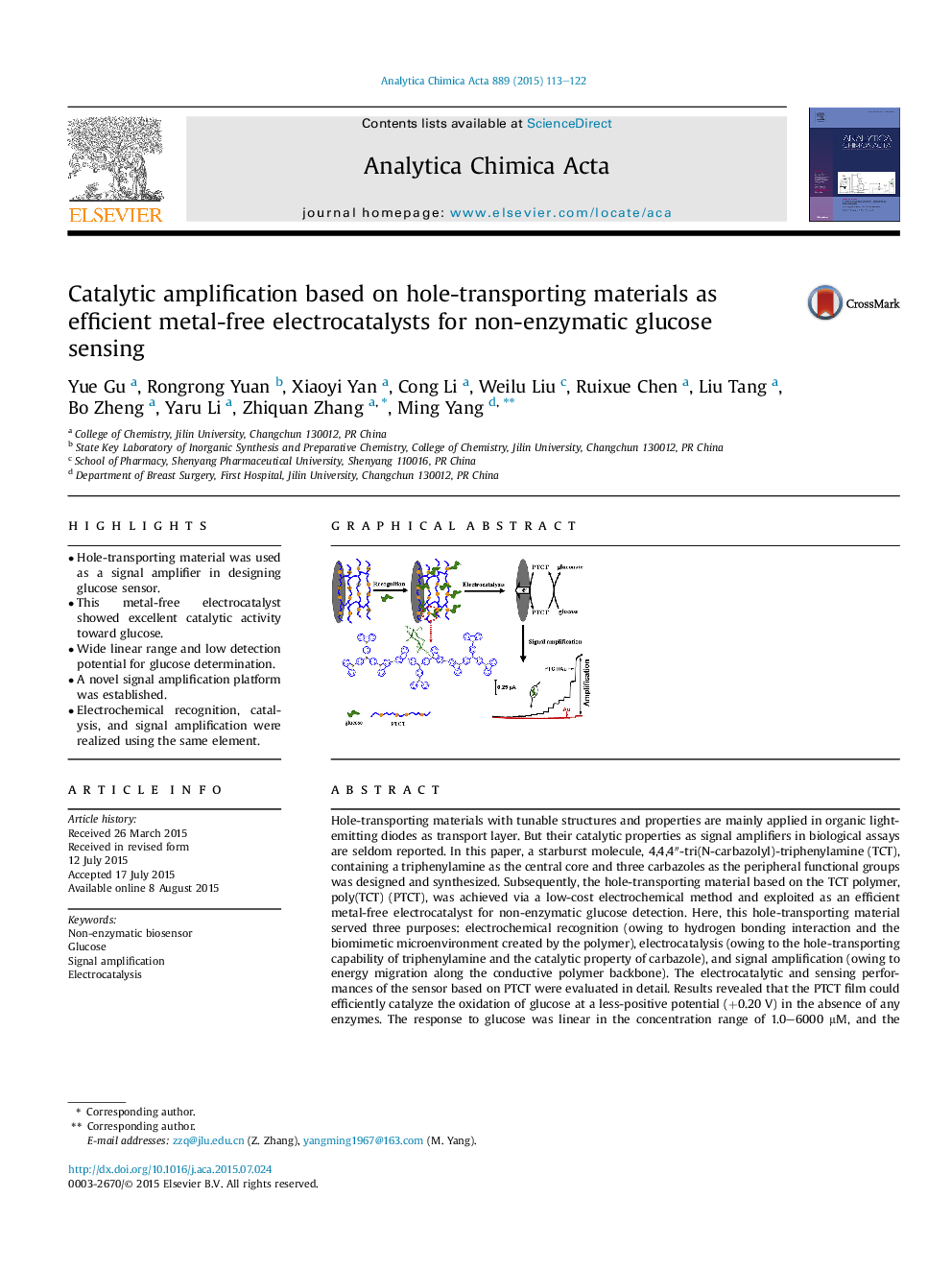| کد مقاله | کد نشریه | سال انتشار | مقاله انگلیسی | نسخه تمام متن |
|---|---|---|---|---|
| 1163506 | 1490943 | 2015 | 10 صفحه PDF | دانلود رایگان |
• Hole-transporting material was used as a signal amplifier in designing glucose sensor.
• This metal-free electrocatalyst showed excellent catalytic activity toward glucose.
• Wide linear range and low detection potential for glucose determination.
• A novel signal amplification platform was established.
• Electrochemical recognition, catalysis, and signal amplification were realized using the same element.
Hole-transporting materials with tunable structures and properties are mainly applied in organic light-emitting diodes as transport layer. But their catalytic properties as signal amplifiers in biological assays are seldom reported. In this paper, a starburst molecule, 4,4,4″-tri(N-carbazolyl)-triphenylamine (TCT), containing a triphenylamine as the central core and three carbazoles as the peripheral functional groups was designed and synthesized. Subsequently, the hole-transporting material based on the TCT polymer, poly(TCT) (PTCT), was achieved via a low-cost electrochemical method and exploited as an efficient metal-free electrocatalyst for non-enzymatic glucose detection. Here, this hole-transporting material served three purposes: electrochemical recognition (owing to hydrogen bonding interaction and the biomimetic microenvironment created by the polymer), electrocatalysis (owing to the hole-transporting capability of triphenylamine and the catalytic property of carbazole), and signal amplification (owing to energy migration along the conductive polymer backbone). The electrocatalytic and sensing performances of the sensor based on PTCT were evaluated in detail. Results revealed that the PTCT film could efficiently catalyze the oxidation of glucose at a less-positive potential (+0.20 V) in the absence of any enzymes. The response to glucose was linear in the concentration range of 1.0–6000 μM, and the detection limit was 0.20 μM. With good stability and selectivity, the proposed sensor could be feasibly applied to detect glucose in practical samples. The encouraging sensing performances suggest that the hole-transporting material is one of the promising biomimetic catalysts for electrocatalysis and relevant fields.
Figure optionsDownload as PowerPoint slide
Journal: Analytica Chimica Acta - Volume 889, 19 August 2015, Pages 113–122
